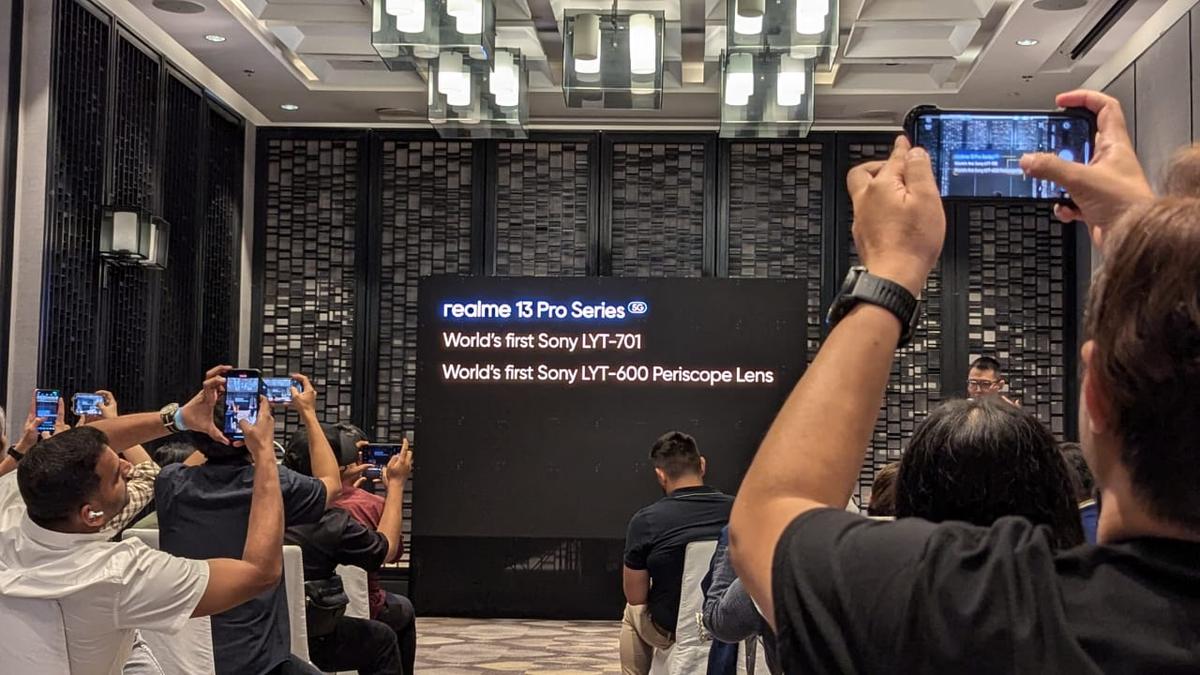药用植物提取物的抗菌活性评价
四种药用植物乙醇提取物的抗菌活性针对属于三种 Gr+ve 菌株(金黄色葡萄球菌 ATCC5638、蜡样芽胞杆菌 ATCC11778 和单核细胞增生李斯特菌 ATCC7646)的四种食源性菌株和一种 Gr−ve 菌株进行了抗菌活性评估。使用纸片扩散技术的细菌(S. Typhimurium ATCC25566)。 根据表中数据 2乙醇植物提取物显着影响食源性细菌菌株。 所有测试的乙醇植物提取物和抗生素(对照样品)对单增李斯特菌 ATCC7646 均具有高度显着性 (p < 0.05),平均抑制区直径为 21.8 毫米,其次是鼠伤寒沙门氏菌 ATCC25566 或金黄色葡萄球菌 ATCC5638,平均抑制区直径为 20.3 毫米平均抑菌圈直径。 相比之下,乙醇植物提取物(平均抑菌圈直径为 17.4 毫米)对蜡样芽胞杆菌 ATCC11778 的作用最不显着。 与测试的抗生素(平均抑菌圈直径为 25.0 毫米)相比,鼠尾草乙醇植物提取物(平均抑菌圈直径为 24.1 毫米)在抑制所有测试的食源性细菌菌株方面最显着(p < 0.05)和有效,其次是肉桂提取物,平均抑菌圈直径为 18.1 毫米。 洋甘菊和万寿菊抑制致病菌株的平均抑菌圈直径分别为 16.2 毫米和 16.3 毫米。 经ANOVA检验,结果见表 2 显示 F 值增加,表明每个模型、截距、致病菌株和乙醇植物提取物的 p 值较低。 数据还表明植物提取物和抑制的致病菌株之间存在很强的 R2 (0.85),表明该模型描述了 85% 的总体变异。
表 2 通过乙醇提取的药用植物对抗食源性病原体。
从以上结果可以看出,受试植物的乙醇提取物可能是比抗生素更有效的抗菌剂,并且它们可以作为商业规模的抗菌剂使用。 葡萄、桑葚、锦葵和柠檬叶的甲醇和乙醇提取物对金黄色葡萄球菌、大肠杆菌、铜绿假单胞菌和沙门氏菌具有抗菌活性28。 他们发现,这些植物的乙醇提取物比甲醇具有更强的抗菌作用,因为除了广泛的植物源化学物质外,这种溶剂还可以溶解极性和非极性分子。 另一方面,乙醇的毒性比甲醇低。 此外,石榴、丁香、生姜和百里香的乙醇提取物分别对蜡状芽孢杆菌、金黄色葡萄球菌、大肠杆菌、铜绿假单胞菌和伤寒沙门氏菌非常有效,但效果各异,而孜然百里香提取物仅对金黄色葡萄球菌有效29。 最重要的植物提取物是来自石榴和芳香植物的提取物。 丹参和番石榴提取物显着抑制金黄色葡萄球菌的生长,而油橄榄和桑树提取物对蜡样芽胞杆菌具有抗菌活性。 他们补充说,O. europaea 和 S. officinalis 提取物可以防止大肠杆菌和 S. entritidis 生长30。
MIC 和 MBC 的测定
在本研究中,使用微量稀释肉汤药敏法测定 MIC,颜色从紫色变为粉红色,表明测试的乙醇植物提取物(洋甘菊、万寿菊、鼠尾草和肉桂)在一定浓度下抑制测试的食源性细菌与范围为0.04至0.39 mg/ml的测试抗生素相比,范围分别为0.37至0.74 mg/ml、0.62至2.50 mg/ml、0.14至0.29 mg/ml和0.39至1.60 mg/ml(图1)。 1 和表 3)。 不同植物提取物化学成分的挥发性可能导致不同植物提取物的 MIC 差异29。 表中数据 3 表明洋甘菊、万寿菊、鼠尾草和肉桂乙醇提取物对单核细胞增生李斯特菌 ATCC7646 的 MIC 值为 0.37、0.62、0.29 和 0.39 mg/ml; 针对鼠伤寒沙门氏菌 ATCC25566 0.74、1.25、0.14 和 1.60 mg/ml; 针对金黄色葡萄球菌 ATCC5638 分别为 0.74、0.62、0.14 和 0.39 mg/ml,针对蜡样芽孢杆菌 ATCC11778 分别为 0.74、2.50、0.29 和 0.78 mg/ml。 阳性对照(抗生素)对单增李斯特菌、鼠伤寒沙门氏菌 ATCC25566、金黄色葡萄球菌 ATCC5638 和蜡样芽胞杆菌 ATCC11778 的 MIC 值分别为 0.19、0.39、0.04 和 0.19 mg/ml。 此外,葡萄和桑叶的乙醇提取物对铜绿假单胞菌 Ps9 的 MIC 值在 0.08 至 0.16 mg/ml 之间变化,对金黄色葡萄球菌 St3、大肠杆菌 Ec3 和伤寒沙门氏菌 Sa1 的 MIC 值各为 0.32 mg/ml28。 对于克雷伯菌属,母菊和辣木乙醇提取物的 MIC 值范围为 15.6 至 62.5 mg/ml,而对于金黄色葡萄球菌和大肠杆菌,其范围为 7.8 至 62.5 mg/ml。 此外,Piper betle L. (litlit, ikmo) 抑制三种测试培养物的生长,即铜绿假单胞菌 (MIC = 4.69 mg/ml)、金黄色葡萄球菌 (4.69 mg/ml) 和白色念珠菌 (37.50 mg/ml) )31。 另一方面,奇异变形杆菌和铜绿假单胞菌的 MIC 值较低,分别为 7.8 至 31.25 mg/ml 和 15.6 至 31.25 mg/ml32研究了植物提取物(洋甘菊、万寿菊、鼠尾草和肉桂)的 MBC,以评估其抑菌和杀菌作用。 测试菌株的条纹形式的细菌生长缺乏,在提供最低 MIC 后颜色变化良好(表明抑制活性)(图 1)。 1)作为 MBC 发生的证据。 测试的乙醇植物提取物中致病菌株的 MBC 值范围为 0.29 至 12.50 mg/ml(表 3)。 所有测试植物提取物的 MBC 值均高于阿莫西林克拉维抗生素针对所有测试菌株获得的 MBC 值,而对于鼠伤寒沙门氏菌 ATCC25566 则相反,鼠尾草乙醇提取物对后者的影响大于抗生素。 洋甘菊、万寿菊和鼠尾草提取物针对金黄色葡萄球菌 ATCC5638 和鼠伤寒沙门氏菌 ATCC25566 的 MBC/MIC 比率范围为 1 至 2。 鼠尾草提取物还对单增李斯特菌 ATCC7646 表现出杀菌活性,而肉桂提取物和阿莫西林克拉维抗生素对除鼠伤寒沙门氏菌 ATCC25566 之外的所有测试菌株均具有杀菌作用。 在 MBC/MIC 比例为 4:8 时,洋甘菊和万寿菊提取物均对蜡样芽孢杆菌 ATCC11778 和单核细胞增生利斯特氏菌 ATCC7646 的生长具有抑菌作用,而鼠尾草提取物仅对第一种菌株具有相同的效果。
不同乙醇植物提取物对选定病原菌的最低抑菌浓度(MIC)(mg/ml)。 C1柱,无菌对照(肉汤+指示剂),无菌悬液,更换为10 μl营养肉汤; C2 柱,不含植物提取物的对照(细菌 + 肉汤 + 指示剂)和两根 C3 柱阳性对照(连续稀释的抗生素 + 肉汤 + 指示剂 + 细菌)。 色谱柱范围分别为测试植物的 E1-E4 乙醇植物提取物、洋甘菊、万寿菊、鼠尾草和肉桂(在孔中连续稀释 + 肉汤 + 指示剂 + 细菌)。
表3 乙醇植物提取物的杀菌和抑菌作用。
从上述结果可以得出结论,单核细胞增生李斯特氏菌ATCC7646的生长对所有测试的乙醇提取物均较敏感,其中记录了鼠尾草和肉桂乙醇提取物的杀菌作用以及洋甘菊和万寿菊的抑菌作用。 葡萄和桑叶乙醇提取物的MBC值范围为0.32至1.28 mg/ml28。 所有选定的菌株都对比例为 2 的葡萄叶提取物的杀菌作用敏感,但伤寒沙门氏菌 Sa1 除外,它对比例为 4 的抑菌作用敏感。与此相反,桑葚提取物表现出比例分别为 4 和 16 时,对铜绿假单胞菌 Ps9 和伤寒沙门氏菌 Sa1 具有抑菌作用;比例为 2 时,对金黄色葡萄球菌 St3 和大肠杆菌 Ec3 具有杀菌作用。 石榴和芳香沙门氏菌提取物针对金黄色葡萄球菌的 MBC 值分别为 5 mg/ml,针对铜绿假单胞菌的 MBC 值分别为 10 和 12.5 mg/ml。 所检测的两种提取物均具有杀菌作用29。 在 15.6 mg/ml 至 125 mg/ml 范围内,M. recutita 和 M. oleifera 乙醇提取物对金黄色葡萄球菌和大肠杆菌具有相同的抑菌功效。 提取物针对克雷伯菌属的 MBC 范围为 31.25 mg/ml 至 125 mg/ml,针对奇异变形杆菌的 MBC 范围为 15.6 至 62.5 mg/ml,针对铜绿假单胞菌的 MBC 范围为 31.25 至 62.5 mg/ml。32。
药用植物提取物的抗生物膜活性评价
生物膜抑制值百分比高于 50% 视为良好,而介于 0 至 49% 之间则视为较差33。 因此,表中呈现的数据 4 图S1显示生物膜粘合剂对单增李斯特菌ATCC7646、鼠伤寒沙门氏菌ATCC25566和蜡样芽孢杆菌ATCC11778的浮游细胞具有高度显着的抑制作用,抑制范围为75%至90%(平均值的84.4%)、81%至86%(分别为平均值的 83.2%)和 75% 至 99%(平均值的 83.4%)。 相比之下,所有测试的提取物对金黄色葡萄球菌 ATCC5638 的生物膜抑制百分比最低。 此外,万寿菊提取物对生物膜粘附具有低水平的显着抑制作用,平均抑制率为 57.7%。 值得注意的是,鼠尾草乙醇提取物对单核细胞增生李斯特菌 ATCC7646 和蜡样芽孢杆菌 ATCC11778 的生物膜抑制百分比与阿莫西林克拉维抗生素相当或略大,第二菌株增加了约 14%。 此外,洋甘菊乙醇提取物使鼠伤寒沙门氏菌 ATCC25566 的生物膜抑制增加了约 2%,而肉桂提取物记录的所有测试提取物的生物膜抑制均低于抗生素。 此外,Sage 对单增李斯特菌 ATCC7646 的生物膜抑制率最高,其次是肉桂和洋甘菊提取物,分别为 90、85 和 82 平均%。 此外,还可以注意到,植物提取物和抑制生物膜致病菌株之间的良好 R2 (0.93) 表明该模型解释了 93% 的总体变异。 因此,选择这些提取物用于以下实验,以检测它们针对单增李斯特菌 ATCC7646 浮游细胞的最佳混合物。 抗菌剂抑制生物膜形成或分解的能力有望最大限度地减少表面和上皮粘膜的微生物定植34。 精油对生物膜的作用与β-内酰胺等抗生素所观察到的作用相当。 事实证明,在生物膜中生长的细菌比浮游细菌对这些抗生素的抵抗力要强得多。 添加精油降低了单核细胞增生李斯特菌生物膜的代谢活性。 接触精油与严重的细胞膜损伤和细胞死亡有关33。 在 SIC 范围为 0.04 至 0.16 mg/ml 时,葡萄和桑叶乙醇提取物可抑制 48-66% 的生物膜形成。 两种提取物对铜绿假单胞菌 Ps9 和大肠杆菌 Ec3 均具有显着的生物膜抑制活性 (57-66%)。 在 SIC 为 0.16 mg/ml 时,葡萄提取物对伤寒沙门氏菌 Sa1 的抑制率达 51%,其次是桑葚 (48%)28。 这可能归因于两种提取物中的酚酸能够抑制菌毛合成并减少生物膜形成所必需的细胞外聚合物材料35。 所有测试的尤金尼亚属物种均抑制铜绿假单胞菌粘附50%以上,表现出抗粘附固体活性。 大多数植物提取物还抑制金黄色葡萄球菌和粪肠球菌的粘附36。 植物提取物干扰受试细菌菌株生物膜形成初始阶段的出色能力可归因于对促进细菌沉积和粘附的力(如布朗、利夫希茨-范德华、沉降和静电相互作用)的干扰。表面37。 植物提取物可能进一步抑制营养物质的利用,因为多种有机和无机化合物以及其他营养物质是细胞增殖以及细胞粘附所必需的。 活性植物提取物可以减少各种身体表面和上皮层的定植,从而减少感染36,38。 此外,植物提取物可能会干扰导致生物膜耐药性的任何因素,例如细胞外聚合物基质的存在,这会导致微生物强烈附着在表面和抗生素渗透性较低,或者外排泵的活性增加,从而导致从细胞中去除抗菌剂。 植物提取物可能干扰细菌的细胞间通讯机制(群体感应),限制生物膜的生长36,39。
表 4 根据针对测试致病菌株的亚抑制浓度(1/2 MIC),药用植物提取物的抗菌膜活性。
植物提取物对单增李斯特菌 ATCC7646 协同作用的 L 最优混合物设计以及创建活性制剂的效率
根据 1/2 MIC 值,估计了三种测试植物提取物(洋甘菊、鼠尾草和肉桂)与作为阳性对照的抗生素之间的协同作用。 为了评估四种混合物组分及其对每种化合物的实验和预测响应,使用了 L 最优混合物设计,并且二次模型被证明是所有模型(线性、特殊三次和三次)的最佳拟合。 模型拟合得到的预测值直接与观测值进行比较见表 1。 在20次试验中,单增李斯特菌ATCC7646对浮游细胞生物膜形成的抑制值为85.44%至94.42%,如表所示 1。 使用以下组合成分 (mg/l) 在 14 次运行中获得最大抑制活性百分比(94.42% 实际值和 94.74% 预测值):洋甘菊,0.18; 鼠尾草,0.15; 和肉桂,0.18。 该运行的成分缺乏抗生素,表明由于仅使用植物提取物而抑制了生物膜,从而降低了成本并提高了细菌的多重耐药性。 虽然最小抑制百分比为 85.44,但在第 5 次和第 20 次试验中,洋甘菊混合物成分 (mg/l) 为 0.12; 鼠尾草,0.15; 肉桂,0.14,抗生素,0.09。 针对单核细胞增生李斯特菌 ATCC7646 生物膜预测的活性组合的统计模型和 ANOVA 分析见表 1。 独特的三次模型具有极显着的效果,F值为22.14,p值为0.001。 除协同混合物成分洋甘菊和肉桂 (AC)、洋甘菊和抗生素 (AD) 以及洋甘菊、肉桂和抗生素外,所有混合物均高度显着(F 值 = 从 7.3 变化到 30.9,p 值从 0.001 变化到 00) (ACD),F 值分别为 2.4、3.9 和 0.005,p 值分别为 0.171、0.093 和 0.94。 平均值为 90.82,标准差为 0.66。 信噪比是足够精度的衡量标准,其比率为 15.89,> 4; 这是更好的并且显示出良好的信号。 该模型的 R2 系数具有很高的确定性 (0.98),表明实验值 (R2 = 0.94) 和预测值 (R2 = 0.88) 非常一致。 多项式回归模型与实验结果一致(图 2)。 2)。 用于表示响应的多元回归分析(二阶多项式方程)的数学模型表示为针对单增李斯特菌ATCC7646的浮游细胞的生物膜抑制百分比。 最终方程。 4 就四种实际的独立成分(A:洋甘菊、B:鼠尾草、C:肉桂和 D:抗生素)而言:
$$begin{对齐} {text{Y}} & = {118.40}{text{A}} – {927.11}{text{B}} – {581.74}{text{C}} – { 881.49}{text{D}} + {1665.05}{text{AB}} \ & quad + {578.22}{text{AC}} + {901.35}{text{AD}} + {3514.44 }{text{BC}} + {4274.68}{text{BD}} \ & quad + {3303.91}{text{CD}} – {2206.00}{text{ABC}} – {2965.82} {text{ABD}} \ & quad + {81.78}{text{ACD}} – {9361.76}{text{BCD}} \ end{对齐}$$
(4)
用于抑制浮游单核细胞增生李斯特氏菌 ATCC7646 细胞的 L 最佳混合物设计的实际值和预测值。
还在 L 最优混合物设计中系统地评估了单组分和双组分图之间的相互作用,以实现补充图 1 和 2 中的模型所证明的最佳生物膜抑制作用。 S2&S3。 除AC的双组分以平行线呈现外,所有双组分之间的相互作用均以非平行线呈现。 三维响应面(3D图像)对应的二维等高线图基于模型方程以图形方式解释每个独立的三组分之间的相互作用,并确定每个组分对单增李斯特菌ATCC7646生物膜的最佳抑制水平,已说明在图中 3广告。 3D 表面和等高线图中的红色区域表示最高的抗生物膜活性,而黄色至蓝色表示中等和最低的抗生物膜活性。 数字 3a 显示 Y 的响应面表示山丘或山谷,这意味着 A、B 和 C (ABC) 分量之间的相互作用显着 (p 值 = 0.005),具有负主效应 (− 2206.00) 和其他独立分量D 的浓度保持在 0.074 mg/ml,以记录强抗生物膜抑制作用。 结果还表明,当洋甘菊 (A) 的范围为 + 0.06 至 + 0.33、鼠尾草 (B) 的范围为 + 0.03 至 + 0.30、肉桂 (C) 的范围为 + 0.07 至 + 0.34 时,可以实现 Y 的增加。 数字 3b 显示 Y 的响应面表示山丘或山谷,这意味着 ABD 的相互作用分量显着(p 值 = 0.002),具有负主效应(− 2965.82),而 C 的另一个独立分量保持在 0.159 mg/ ml 以实现高百分比的抗菌膜抑制。 因此,洋甘菊 (A) 的 Y 增加范围为 + 0.06 至 + 0.31,鼠尾草 (B) 的 Y 增加范围为 + 0.03 至 + 0.28,抗生素 (D) 的 Y 增加范围为 0.00 至 + 0.25。 还有,如图。 3c 证明 Y 的回归表明出现丘陵或山谷,意味着显着 (p = 0.036) B、C 和 D 分量之间的相互作用显着 (p = 0.005),具有负主效应 (− 9361.76) 和其他独立效应A组分保持在0.149 mg/ml以进行高抗生物膜抑制。 当鼠尾草(B)的范围为+0.03至+0.28、肉桂(C)的范围为+0.07至+0.32、抗生素(D)的范围为0.00至+0.25时,可以实现Y的增加。 而在图. 3d 3D 图像和等值线图表明,ACD 的 Y 型峰和无显着性 (p = 0.94) 相互作用成分,当 B 的其他独立成分为 0.119 mg/ 时,它是正主效应 (+ 81.78) ml以达到最大百分比的抗菌膜抑制。 当洋甘菊 (A) 的范围为 + 0.06 至 + 0.31、肉桂 (C) 的范围为 + 0.07 至 + 0.32、抗生素 (D) 的范围为 0.00 至 + 0.25 时,Y 值增加。 肉桂对单增李斯特菌具有良好的抗菌和抗生物膜作用,MIC值为0.100 mg/ml40。 肉桂精油完全抑制最初的细胞附着,并在孵育 1 小时后抑制 61% 的预形成生物膜。 丁香酚、肉桂醛和 β-石竹烯单独使用时,对单核细胞增生李斯特菌 MTCC657 的表面附着抑制和随后的生物膜形成有影响(67.42% ± 2.6、60.71% ± 3.0 和 28.63% ± 2.4)和鼠伤寒沙门氏菌 MTCC3224(59.61% ± 2.4、52.4% ± 3.1 和 19.27% ± 2.0)41。 发现肉桂醛/丁子香酚组合对表面附着和随后生物膜形成的抑制作用对单核细胞增生利斯特氏菌 MTCC657 (89.16% ± 3.2) 和鼠伤寒沙门氏菌 MTCC3224 (82.30% ± 3.4) 显着更大 (p < 0.05)。与 β-石竹烯/肉桂醛(单增李斯特菌 MTCC657 为 64.83 ± 3.6% 和鼠伤寒沙门氏菌 MTCC3224 为 56.86 ± 2.2%)和 β-石竹烯/丁香酚(单增李斯特菌 MTCC657 为 71.44% ± 2.1 和沙门氏菌 MTCC3224)的抑制效果相比。鼠伤寒菌 MTCC3224 为 63.12% ± 2.4)。 此外,发现肉桂醛/丁子香酚混合物的组合比减少针对测试细菌病原体的传导生物膜更有效(单增李斯特菌 MTCC657 为 89.16% ± 3.2,鼠伤寒沙门氏菌 MTCC3224 为 70.61% ± 2.7)。 此外,鼠尾草提取物仅在高浓度(512 μg/ml)时减少生物膜形成,乳链菌肽和鼠尾草提取物的组合可以抑制单核细胞增生李斯特菌的生物膜形成42。
等值线图和三维响应面,显示了洋甘菊、鼠尾草和肉桂的混合物以及抗生素对单核细胞增生李斯特氏菌 ATCC7646 的抗菌膜作用。 (a) 保留洋甘菊、鼠尾草和肉桂以及其他独立抗生素成分的乙醇混合物。 (b) 保留洋甘菊、鼠尾草和抗生素的乙醇混合物,以及肉桂的其他独立成分。 (c) 保留鼠尾草、肉桂和抗生素的乙醇混合物,以及洋甘菊的其他独立成分。 (d) 保留洋甘菊、肉桂和抗生素的乙醇混合物,以及鼠尾草的其他独立成分。 CH:洋甘菊乙醇提取物,SV:鼠尾草乙醇提取物,CN:肉桂乙醇提取物,AB:抗生素。
使用 GC-MS 分析乙醇植物提取物混合物
数据如图。 4 和表 5 显示了 GC/MS 分析得出的乙醇植物提取物混合物(洋甘菊、鼠尾草和肉桂)的植物化学成分,包括保留时间 (RT)、峰面积%(浓度)、分子量、代谢物名称和质谱。 该混合物由 12 种植物化学化合物(峰)组成。 将成分的质谱与 NIST 库进行比较,发现 12 种植物化学化合物(2-丙烯醛、3-苯基-、苯并呋喃、2-丙烯醛、3-(2-甲氧基苯基)、丙烷、2-环己基-2-苯基、橙花叔醇异丁酸酯、2H-吡喃-3-醇、四氢-2,2,6-三甲基-6-(4-甲基-3-环己烯-1-基)-、 [3S-[3.alp, (Z)-2-(Hexa-2,4-diyn-1-ylidene)-1,6-dioxaspiro[4.4]壬-3-烯, (4aR,5R,9aR)-1,1,4a,8-四甲基-2,3,4,4a,5,6,7,9a-八氢-1H-苯并[7]annulen-5-、柠檬酸丁酯、十七烷、邻苯二甲酸、二(6-甲基庚-2-基)酯和5-(7a-异丙烯基-4,5-二甲基-八氢茚-4-基)-3-甲基-五-2,4-dien-1-ol) 进行了表征和鉴定(表 5)。 观察到最大面积百分比是在室温 16.7 分钟时用 2-丙烯醛,3-苯基覆盖,随后用 2H-吡喃-3-醇、四氢-2,2,6-三甲基-6-(4-甲基-3-)覆盖。环己烯-1-基)-, [3S-[3.alp covered at RT of 29.538. This compound affects the cell membrane permeability, and confocal laser scanning microscopy images illustrate the detachment and killing of existing biofilms43. Dong, et al.44 added that it has anticancer, anti-inflammatory, and antioxidant properties. The minimum area % was recorded by Butyl citrate (0.76%) and Phthalic acid, di(6-methylhept-2-yl)ester (1.40%) covered at RT of 39.62 and 44.46 min, respectively. These compounds have antimicrobial, antioxidant, insecticidal, antineoplastic, and immunosuppressive effects45. Moreover, the first compound was used as a food additive, and the other compounds showed the same activities as antimicrobial, anti-inflammatory, anticancer, antioxidant, anti-tubercular, and anti-Alzheimer’s46. Phenolic acids are important because of their pharmacological activities, such as antimicrobial, cytotoxicity, anti-inflammatory, and antitumor. In addition to these properties, the flavonoids act as powerful antioxidants, scavenging free radicals to protect the human body from dangerous diseases, and this property is dependent on the attachment and number of hydroxyl groups8. Polyphenolic extract has anti-swarming activity on biofilm formation of Chromobacterium violaceum 026, E. coli K-12 and P. aeruginosa PAO1 through targeting quorum sensing (QS) related violacein factors47. Recently, emerging evidence also indicated that natural products such as erianin (from Dendrobium chrysotoxum), isovitexin and parthenolide exhibited an inhibitory effect on cell adhesion, binding activity of fibronectin and QS factors, respectively, through targeting SrtA or downregulation of surface protein staphylococcal protein A (SpA) or blocking P. aeruginosa associated virulence factors, thereby impairing microbial biofilm formation48.
Chromatogram of Ethanolic plant extracts mixture by GC-Mass.
Table 5 GC/MS Analysis of the Ethanolic mixture plant extracts (Chamomile, Sage, and Cinnamon).
Cytotoxicity of ethanolic plant extracts mixture on Vero cell line
Vero is a normal kidney CCL-81 cell line. Cells are epithelial and adherent. This study used the MTT method to measure the cytotoxicity activity of an ethanol mixture (Chamomile, Sage, and Cinnamon) extract against the Vero cell line at six different concentrations. According to the results shown in Fig. 5 a, after being exposed to an ethanol mixture extract at a concentration of up to 250 µg/ml for 24 h, the Vero cell maintained a percentage of viable cells that ranged from 99.09 to 99.64%. Therefore, at 31.25, 62.50, 125, and 250 µg/ml concentrations, the ethanol mixture extract showed no cytotoxicity in the cell line. At a concentration of 500 µg/ml of ethanol mixture extract, the cell viability was reduced to 61.11% (with inhibition of 38.88%), but cytotoxicity was not observed because more than 50% of the cells remained alive. The cell viability was drastically reduced to 18.01%, and the toxicity increased to 81.99% when the extract of an ethanol mixture was used at a high concentration of 1000 µg/ml.
Vero normal cell line viability and inhibition percentage (a) and morphological changes of the cell line (b) after treatment with various concentrations of ethanolic mixture extract (ranged from 31.25 to 1000 µg/ml), photographed with an inverted phase-contrast microscope at a magnification of × 100. Apoptotic cells (cell shrinkage), cell debris, and major decreases in cell number are all indicated by the blue arrows on the image. An ethanol mixture extract included Chamomile, Sage, and Cinnamon extracts.
GraphPad Prism version 5 was used to determine the half-maximal (50%) inhibitory concentration (IC50). The IC50 values were calculated as 50% cell viability inhibition28. Vero cells had an IC50 value of 671.76 ± 9.03 µg /ml and a high R2 of 0.93 (Fig. 5a).
The morphological changes of the cell line were examined after treatment with various concentrations of ethanolic mixture extract (ranging from 31.25 to 1000 µg/ml), using an inverted phase-contrast microscope at a magnification of 100 × (Fig. 5 b). When treated with an ethanolic mixture extract of up to 250 µg/ml, the Vero cells survived and had normal adherent cells. While the cell morphology changed clearly, particularly at higher concentrations (1000 µg/ml) of ethanolic mixture extract, it appears apoptotic cells (cell shrinkage), cell debris, as well as major decreases in cell number indicate cell death compared to control. Five medicinal plants (Acacia tortilis (Hayne), Fuerstia Africana T.C.E. Friers, Manilkara discolor (Sond.) J.H.Hemsl., Pentas lanceolata (Forssk.) Defleurs, and Sericocomopsis hildebrandtii Schinz) used in Kenya and higher IC50 values greater than 0.100 mg/ml, meaning its non-cytotoxicity towards Vero cell lines49. The IC50 values for the methanolic aerial parts and roots of F. africana extract were > 500 µg/ml and 366.38 µg/ml, of P. lanceolata was > 500 µg/ml, and of S. hildebrandtii were > 500 µg/ml and 93.97 µg/ml, respectively. Whereas methanolic Aerial parts and roots A. tortilis and M. discolor had IC50 values of > 100 µg/ml. Furthermore, Tieghemella heckelii stem bark had an IC50 value greater than 0.01 mg/ml (ranging from 0.051 to 0.192 mg/ml) and had an 80.2% viability, neither of which indicated any apparent cytotoxicity towards the Vero cell line50. IC50 for wormwood ethanolic leaf extract against the normal kidney cell line was 500 µg/ml51. In vitro, the cytotoxic activity of the ethanolic leaf extract of Eucalyptus camaldulensis against normal human fibroblast cell line OUMS with IC50 value of 165.9 µg/ml ± 10.352.
Application of plant extracts mixture against biofilm formation on stainless steel milk tank surface during white soft cheese manufacture
L. monocytogenes has an excellent potential to form biofilms on materials such as stainless steel, rubber, and plastics. These materials are commonly set up in dairy instruments in all plants, milk handling equipment, milk lines, milk tanks, transportation trucks, or even sampling equipment, which may contribute to the ability of L. monocytogenes biofilms presence in dairy processing plants53. The incidence of L. monocytogenes biofilm in dairy plants was observed in several studies54. Prevention of the establishment of biofilms in milking equipment is a crucial step in fulfilling the requirement for safe and high-quality milk and dairy products53. On another aspect, the ability of L. monocytogenes cells attached to milk equipment surfaces to detach and multiply in dairy products constitutes a significant risk to the consumer, as the detached cells showed higher tolerance to stressful conditions than suspended cells55.
For the public health significance of L. monocytogenes biofilm existence in milk and dairy products plants and from the results mentioned above, another part of this study was directed to examine the incidence of L. monocytogenes ATCC7646 organism shedding from the formed biofilm in the stainless steel containers to milk during different storage conditions (time and temperature) and its persistence in soft cheese produced from contaminated milk concerning the possible inhibiting effect of the added ethanolic Sage extract and the selected extracts mixture. Data presented in Table 6 showed that L. monocytogenes ATCC7646 detached cell count was significantly increased after 12 h of storage at 4 °C in the control group than other treated groups, which indicates the antimicrobial effect of ethanolic Sage extract and the mixture of the tested extracts against L. monocytogenes ATCC7646 even in the refrigerator. The bactericidal effect of the tested ethanolic extracts mixture was better than that of the ethanolic Sage extract as it significantly lowered the count of L. monocytogenes ATCC7646 after 6 h of storage (3.12 Log CFU/ml). Meanwhile, the ethanolic Sage extract reduced the count significantly after 12 h of storage (2.86 Log CFU/ml) at 4 °C. In parallel, the same samples were stored at 20 °C to compensate for the average room temperature, compared with refrigerator (4 °C) raw milk storage until the cheese production process started. Detached L. monocytogenes ATCC7646 cells were significantly increased after 6 h of storage in both controls (4.03 Log CFU/ml) and ethanolic Sage (3.54 Log CFU/ml) milk groups than the fortified group with the mixture of the extracts (3.04 Log CFU/ml) which was significantly lower than the control group even after 12 h of storage. That indicates the strong, persistent antibacterial effect of the tested ethanolic extracts mixture against L. monocytogenes during storage for 12 h either inside the refrigerator (4 °C) or outside at room temperature (20 °C), which have been tabulated in Table 6. L. monocytogenes showed greater survival capacity during storage at 4 °C compared to 22 °C with more than 2.5 reductions56.
Table 6 Survival of L. monocytogenes ATCC7646 detached cells from produced biofilm in stainless steel containers in raw milk stored for 12 h at 4 and 20 °C (Log10 CFU/ml).
Raw milk stored at 4 °C in the stainless steel container with L. monocytogenes ATCC7646 biofilm for 12 h was then used for white soft cheese production. Detached L. monocytogenes ATCC7646 cells were counted after cheese curd production (zero-day) and periodically day after day till 14 days of storage at 4 °C or till the disappearance of the microorganism, as presented in Table 7. Refrigeration temperatures during storage and ethylene production during the cheese ripening process favour the growth of L. monocytogenes57. That cleared the significant increase of L. monocytogenes count in the control sample after production and during storage till samples spoilage after 10 days. On the other hand, the count was significantly lowered by using the sage extract after 4 days of storage (2.73 Log CFU/g) and continued to significantly decrease at each examination interval till the complete disappearance of cheese samples after 10 days of storage. Best results were achieved by the use of selected extracts mixture as a fortification in cheese; L. monocytogenes ATCC7646 count was lowered in this group than in other groups significantly from the second day of storage (2.54 Log CFU/g) till complete disappearance after only 8 days of storage. This ensures the favourable bactericidal effect of ethanolic Sage extract and the tested ethanolic extracts mixture even in the presence of salt, ripening byproducts, and cold temperature in white soft cheese, which are the optimum conditions for the growth of L. monocytogenes ATCC7646 as indicated in the control samples. The Sage extract significantly increased the antimicrobial activity of the fresh cheese against L. monocytogenes (1.2 Log CFU/g)58. Although predictive microbiology models recounting the growth/death kinetics of L. monocytogenes in variable cheeses have been widely recognized, the variability in physicochemical characteristics and technological parameters between different cheese types affects the microbial behaviour of L. monocytogenes, especially type and level of lactic acid bacteria used as a starter culture56. L. monocytogenes strains organized in biofilm, in Gorgonzola cheese processing plants located in Italy59. Also, biofilm-forming L. monocytogenes strains isolated at different points in Brazilian cheese processing plants, including the cooling chamber (n = 16), floor of the pasteurization room (n = 8), floor of cooling chamber (n = 32), plastic crates (n = 8), platform of the cooling chamber (n = 7), surfaces of worker’s gloves (n = 3), and brine (n = 5)60.
Table 7 Survival of L. monocytogenes ATCC7646 in white soft cheese produced from contaminated milk from production and during storage at 4 °C for 14 days.
The sensory observation of food is a complex process affected by various elements, including the dairy product’s flavour, texture, and appearance61. Herbal extracts could enhance sensory qualities, prevent lipid oxidation, and lengthen the shelf life of soft cheeses62.
Therefore, the sensory quality of produced white soft cheese fortified with ethanolic Sage extract and the tested ethanolic extracts mixture was important to be evaluated immediately after curdling and during storage, at 4 °C for 14 days, as presented in Table 8. From the production point, the soft cheese samples fortified with ethanolic extracts mixture were the most preferable to the panelist, with a significantly higher overall acceptability with a mean value of 92.2 ± 2.7 than control and Sage extract fortified cheese and the only sample graded as excellent. This highest overall acceptability is attributed to the high flavour (37.6 ± 1.5) and texture (36.4 ± 1.8) scores, even than the control group.
Table 8 Sensory evaluation of white soft cheese samples fortified with (ethanolic Sage 0.03% w/v and tested mixture extracts) from production and during storage at 4°C for 14 days.
On the contrary, the ethanolic Sage extract cheese samples had the lowest scores for texture, colour, and overall acceptability (33.6 ± 3.5, 7.8 ± 0.4, and 84 ± 3.0, respectively). The most obvious change was the colour of the cheese and abnormal flavour, especially after taste. As anticipated, overall acceptability ratings dropped as storage times increased. Although that, the mixture of the extracts fortified cheese showed the most stable parameters with good overall acceptability till the 7th day of storage, while control and sage extract cheese were graded as fair since the 5th day of storage. By the end of the storage period (14 days), all cheese samples were fair to the panelist but with the most acceptability and significant highest score recorded for the mixture of the extracts fortified cheese samples; 30.6 ± 1.1, 30.8 ± 2.3, 7 ± 0.7, and 74.4 ± 3.3 for flavour, texture, colour, and overall acceptability, respectively.
Recently, several studies have been interested in studying the effect of different herbal extracts on soft cheese sensory parameters to be used as natural additives for preservation. UF-soft cheese containing essential oils remained acceptable even at the end of the storage period, and it was found that cumin essential oil addition to UF-soft cheese gained the highest scores for the sensory attributes63. Marjoram and Sage extracts as additives in Kariesh cheese is highly recommended due to their health effect but with a concentration lower than 2%64. Sensory characterization of fresh soft cheese fortified with ginger, clove, and thyme oils displayed overall higher acceptability scores than control samples (p < 0.001)26. Thyme, Moringa, and Cardamom oils improved the sensory parameters and total score points of enriched UF-white soft cheese compared with the control samples and remained acceptable during the storage period65.
2024-01-27 11:25:03
1706356163
#使用天然植物提取物消除牛奶和奶酪加工过程中不锈钢表面生物膜上分离的单核细胞增多性李斯特菌












